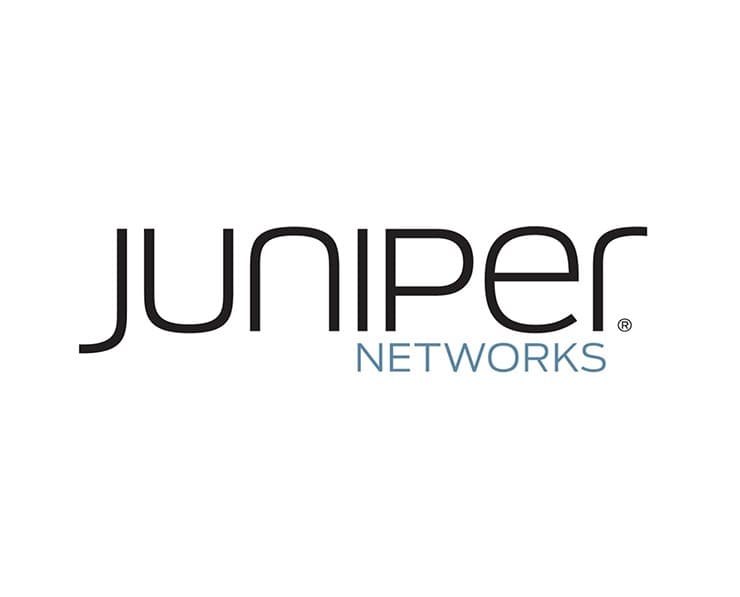Student Feedback
JN0-363: Service Provider Routing and Switching, Specialist (JNCIS-SP) Certification Video Training Course Outline
Introduction
Juniper JNCIS - Junos Intermedia...
Juniper JNCIS - Junos Service Pr...
Juniper JNCIS - Junos MPLS Funda...
Juniper JNCIS-SP Tunnels, Servic...
JNCIS-ENT Upskill
Introduction
JN0-363: Service Provider Routing and Switching, Specialist (JNCIS-SP) Certification Video Training Course Info
Learn Juniper JNCIS-SP JN0-363: Comprehensive Service Provider Course
Earn your Juniper Service Provider certification by completing this comprehensive JNCIS-SP JN0-363 course.
What You Will Learn From This Course
This course is designed to provide a complete and practical understanding of Juniper Service Provider technologies in modern networking environments. You will learn how to configure, manage, and troubleshoot service provider networks using Junos OS. The course covers foundational and advanced concepts, ensuring that learners gain both the theoretical knowledge and hands-on skills needed to excel in the JNCIS-SP JN0-363 exam and real-world service provider deployments. Participants will gain expertise in routing protocols such as OSPF, BGP, IS-IS, and static routing, and develop skills in implementing MPLS networks, LDP, RSVP, CSPF, and segment routing. Advanced Layer 2 features, including VLANs, MVRP, IRB, virtual switches, provider bridging, and spanning tree protocols, are also covered, providing a full understanding of switching in service provider environments. Additionally, learners will gain exposure to enterprise-level routing and switching topics covered in JNCIS-ENT, enabling them to upskill for future certifications. Hands-on exercises using Juniper vLabs, GNS3, or EVE-NG will reinforce theoretical concepts and ensure learners are well-prepared to configure and troubleshoot live networks. By the end of the course, students will be confident in designing, implementing, and managing service provider networks, while also having the knowledge to advance toward JNCIP-SP and JNCIP-ENT certifications.
Learning Objectives
• Develop a comprehensive understanding of Juniper Service Provider technologies and their application in modern networking
• Gain practical skills in configuring and managing Junos OS on MX Series routers and virtual devices
• Implement static routing, routing instances, and load balancing to optimize network performance
• Deploy and manage dynamic routing protocols, including OSPF, BGP, IS-IS, and IPv6 routing
• Understand MPLS architecture, configure static LSPs, RSVP, LDP, and implement traffic engineering with CSPF
• Gain proficiency in segment routing, fast reroute, link protection, and node-link protection for high availability networks
• Learn Layer 2 technologies such as VLAN tagging, MVRP, IRB, bridging, and spanning tree protocols (STP, RSTP, MSTP, VSTP)
• Configure and monitor LAGs, MC-LAGs, virtual switches, provider bridging, and logical systems within service provider networks
• Troubleshoot common network issues and leverage tools for effective problem resolution
• Prepare thoroughly for the Juniper JNCIS-SP JN0-363 exam and gain confidence in real-world service provider environments
Target Audience
This course is ideal for network engineers, administrators, and IT professionals seeking to specialize in Juniper service provider technologies. It is suitable for individuals at all experience levels who have foundational networking knowledge and wish to deepen their understanding of Junos OS and service provider networking. Engineers preparing for the JNCIS-SP JN0-363 exam will find this course particularly valuable, as it covers all exam topics in detail. Professionals aiming to advance toward JNCIP-SP or JNCIP-ENT certifications will benefit from the intermediate and advanced topics included in the course. Students interested in gaining practical hands-on skills for configuring, monitoring, and troubleshooting service provider networks will also find the course highly relevant. Additionally, those currently working in enterprise networks who want to expand their expertise into service provider routing, MPLS, and Layer 2 technologies will gain the knowledge and confidence needed to excel in hybrid networking environments.
Requirements
To fully benefit from this course, learners should have access to Juniper vLabs, GNS3, or EVE-NG for practical exercises, though it is not mandatory. Familiarity with basic networking concepts and hands-on experience with networking devices will enhance understanding. Learners should be prepared to practice routing and switching configurations in lab environments to reinforce theoretical knowledge. While the course is designed to provide guidance for all topics, hands-on practice will significantly improve comprehension and retention. The course content is structured to gradually progress from foundational knowledge to advanced service provider topics, allowing learners to build confidence and competence over time.
Prerequisites
Before starting this course, learners should have a basic understanding of networking concepts, including IP addressing, subnetting, routing, and switching fundamentals. Knowledge of the Juniper JNCIA certification or equivalent experience with Junos OS is recommended. Familiarity with enterprise networking concepts and basic configuration of networking devices will help learners grasp advanced topics more quickly. No prior experience with MPLS, RSVP, LDP, or segment routing is required, as these topics are introduced and explained in detail during the course. A willingness to engage in practical lab exercises and follow along with real-world examples will ensure learners gain maximum benefit from the training.
Juniper Service Provider Technologies Overview
The course begins with an introduction to Juniper service provider technologies, including an overview of the MX Series routers and their capabilities in modern networking environments. Participants will learn about the architecture of Junos OS and how it supports both enterprise and service provider networks. The course emphasizes the importance of service provider routing and switching technologies, providing a strong foundation for designing and managing complex networks. By understanding how Juniper devices handle routing, MPLS, and Layer 2 services, learners will be able to deploy and troubleshoot networks effectively. The course also covers logical systems and virtual routers, enabling learners to design scalable and multi-tenant service provider environments.
Routing Fundamentals
Participants will gain hands-on experience in configuring and managing static routing within Junos OS. The course covers routing instances, route sharing between instances, and load balancing techniques to optimize network performance. Advanced routing protocols such as OSPF, BGP, IS-IS, and IPv6 are covered with detailed configuration examples. Learners will understand how to implement routing policies, route filtering, and route redistribution to control network traffic effectively. High availability features such as GRES, NSR, and unified ISSU are included to ensure learners can maintain resilient and reliable networks.
MPLS and Traffic Engineering
A significant portion of the course focuses on MPLS and service provider traffic engineering. Learners will understand the purpose of MPLS, the structure of labels, and how label-switched paths operate. Practical exercises include configuring static LSPs, RSVP LSPs, and traffic-engineered paths using CSPF. The course also covers fast reroute, link protection, node-link protection, and segment routing, providing learners with the tools to design robust and high-performance networks. The use of RSVP bandwidth reservations, priority levels, and traffic optimization techniques ensures learners can implement networks that meet strict performance and reliability requirements.
Layer 2 Technologies
Service provider switching is a critical part of the course. Learners will explore Ethernet standards, bridging, VLAN tagging, MVRP, IRB, and firewall filters. Advanced Layer 2 topics such as provider bridging, VLAN stacking models, and virtual switches are covered, ensuring learners understand both theory and practical implementation. Spanning tree protocols, including STP, RSTP, MSTP, and VSTP, are explained with configuration and monitoring exercises. The course also covers LAGs, MC-LAGs, and virtual chassis, providing a comprehensive understanding of high-availability Layer 2 networks.
Troubleshooting and Best Practices
Learners will develop practical troubleshooting skills, including identifying common network issues, understanding the root causes of failures, and using Junos OS tools to resolve problems efficiently. The course emphasizes best practices for configuring, monitoring, and maintaining service provider networks. By applying troubleshooting techniques and hands-on labs, learners will gain the confidence to manage live networks with minimal disruption and high reliability.
Course Modules / Sections
The Juniper JNCIS-SP JN0-363 course is divided into multiple modules to ensure a comprehensive learning experience that gradually progresses from foundational knowledge to advanced service provider concepts. Each module is designed to provide both theoretical understanding and practical application of Junos OS and Juniper Service Provider technologies.
The first module focuses on Junos OS fundamentals and service provider architecture. Learners are introduced to the Junos operating system, MX Series routers, and virtual devices used in service provider environments. The module covers system architecture, logical systems, virtual routers, and virtual switches. By understanding the structure and operation of Junos OS, learners gain the foundation necessary to configure and manage complex service provider networks efficiently.
The second module is dedicated to routing fundamentals within service provider networks. Participants will explore static routing, dynamic routing protocols including OSPF, BGP, IS-IS, and IPv6, and load balancing techniques. Routing instances, route sharing, policy-based routing, and filtering are thoroughly discussed. The module also addresses high availability features such as GRES, NSR, and unified ISSU, ensuring learners are capable of maintaining resilient network operations.
The third module emphasizes Layer 2 technologies and service provider switching. Learners will examine Ethernet standards, bridging, VLANs, VLAN tagging, MVRP, IRB, Layer 2 firewall filters, and provider bridging. Advanced topics such as VLAN stacking, virtual switches, spanning tree protocols (STP, RSTP, MSTP, VSTP), LAGs, MC-LAGs, and Virtual Chassis are covered. The module ensures participants understand the design and configuration of high-availability Layer 2 networks in service provider environments.
The fourth module focuses on MPLS fundamentals and traffic engineering. Participants will explore MPLS architecture, label-switched paths, RSVP, LDP, CSPF, and segment routing. The module includes configuring static and dynamic LSPs, traffic engineering, bandwidth reservations, priority levels, fast reroute, and link and node protection. Practical examples and lab exercises reinforce the implementation of MPLS for service provider networks, preparing learners for real-world deployment scenarios.
The fifth module addresses advanced service provider features and troubleshooting. Learners gain practical skills in monitoring, troubleshooting, and resolving network issues. Tools and techniques for identifying root causes, analyzing routing and switching behavior, and ensuring network reliability are emphasized. The module also includes best practices for maintaining secure, high-performance, and scalable service provider networks.
The final module provides exam-focused content to prepare learners for the JNCIS-SP JN0-363 certification. This includes a review of key topics, configuration labs, and scenarios that simulate real-world service provider networks. Learners will gain confidence in handling practical challenges while consolidating knowledge required for certification success.
Key Topics Covered
The Juniper JNCIS-SP JN0-363 course covers a wide range of topics that provide both depth and breadth in service provider networking technologies.
Routing and Switching: The course begins with static routing and progresses to advanced dynamic protocols. OSPF, BGP, IS-IS, and IPv6 are explored in detail, including route redistribution, policy-based routing, route filtering, and load balancing strategies. Participants learn to implement and monitor these protocols within Junos OS, ensuring network reliability and efficiency. High availability features such as GRES, NSR, and unified ISSU are integrated into routing modules, allowing learners to design resilient networks.
MPLS and Traffic Engineering: MPLS concepts are thoroughly covered, including the purpose and applications of MPLS, label structures, and label-switched path mechanics. Learners configure static LSPs, RSVP-based LSPs, and LDP deployments. Traffic engineering with CSPF, bandwidth reservations, priority levels, fast reroute, and link and node protection techniques are included to ensure robust service provider network design. Segment routing is introduced as a modern alternative to LDP, with configuration and verification exercises provided.
Layer 2 Technologies: Service provider switching is emphasized through VLANs, VLAN tagging, MVRP, IRB, Layer 2 firewall filters, provider bridging, and VLAN stacking. Virtual switches, spanning tree protocols (STP, RSTP, MSTP, VSTP), LAGs, MC-LAGs, and Virtual Chassis configurations are explained. Practical examples demonstrate how these technologies work together to provide high-performance, scalable, and redundant Layer 2 networks.
Advanced Network Features: Additional topics include logical systems, routing instances, and virtual routers. Learners explore interconnecting routing instances, configuring virtual switches, and understanding logical systems for multi-tenant network designs. The course also covers troubleshooting strategies, including common network failures, root cause analysis, and problem resolution using Junos OS tools.
Practical Labs and Scenarios: Hands-on practice is integrated throughout the course to reinforce theory. Labs using Juniper vLabs, GNS3, or EVE-NG enable learners to configure, verify, and troubleshoot real-world service provider networks. Labs include MPLS configurations, LSP deployment, RSVP, traffic engineering, segment routing, VLAN tagging, spanning tree configurations, and high-availability features.
Exam Preparation: The course concludes with a focus on JNCIS-SP JN0-363 exam preparation. Key topics, lab exercises, and practical scenarios are reviewed to ensure learners can confidently apply their knowledge in exam conditions. Realistic configurations and troubleshooting challenges are presented to simulate practical network environments, enabling learners to consolidate their knowledge for certification success.
Teaching Methodology
The teaching methodology of this course combines theoretical instruction with hands-on practical exercises to ensure a complete learning experience. The approach emphasizes active engagement, allowing learners to apply knowledge in simulated and real-world networking scenarios. Each module begins with conceptual explanations, followed by configuration examples and lab exercises. Learners progress from simple configurations to complex network designs, building confidence at every stage.
Instruction is delivered using a step-by-step approach, demonstrating how to configure Junos OS for routing, switching, MPLS, traffic engineering, and advanced service provider features. Practical labs reinforce concepts, enabling learners to verify configurations, troubleshoot issues, and understand the impact of design decisions in a controlled environment.
Visual aids, diagrams, and network topologies are used to clarify concepts and illustrate network behavior. Learners are guided through configuration workflows and best practices, allowing them to understand not just how to configure features, but why certain approaches are preferred in service provider environments.
The course also emphasizes problem-solving and critical thinking. Learners are encouraged to identify potential issues, analyze network behavior, and implement corrective actions. This approach ensures that students develop practical skills applicable to real-world networking tasks.
Assessment of understanding is embedded throughout the course using lab exercises, configuration scenarios, and troubleshooting challenges. Each module concludes with practical exercises that allow learners to test their knowledge and receive immediate feedback. This hands-on approach ensures retention of theoretical knowledge and enhances practical competence.
Instructors provide guidance and explanations for complex topics, ensuring learners can progress at a pace suitable to their experience level. The methodology encourages continuous learning, repetition, and reinforcement of key concepts to maximize exam readiness and real-world application.
Assessment & Evaluation
Assessment and evaluation in the Juniper JNCIS-SP JN0-363 course are designed to measure both theoretical knowledge and practical skills. Participants are evaluated through a combination of hands-on labs, configuration exercises, scenario-based challenges, and review quizzes. The goal is to ensure learners can confidently apply their knowledge in service provider networks and are prepared to pass the JNCIS-SP JN0-363 exam.
Lab exercises are central to the evaluation process. Learners configure routing protocols, MPLS, segment routing, Layer 2 technologies, and high-availability features in virtual lab environments. Each lab includes verification steps to confirm correct implementation, as well as troubleshooting exercises to identify and resolve issues. This approach ensures practical competence in addition to theoretical understanding.
Scenario-based challenges are provided to simulate real-world networking problems. Learners must design, implement, and troubleshoot networks using Junos OS, applying multiple concepts learned across different modules. These challenges reinforce knowledge, enhance critical thinking skills, and prepare students for the complexity of service provider networks.
Progress quizzes are included at the end of each module to assess comprehension of key concepts. These quizzes cover routing protocols, MPLS, Layer 2 switching, traffic engineering, and advanced network features. Immediate feedback helps learners identify areas requiring further study and reinforces correct understanding.
Final evaluation is based on a comprehensive review of all course modules. Learners complete complex lab scenarios that incorporate multiple technologies and require end-to-end network configuration and troubleshooting. Successful completion demonstrates mastery of Juniper service provider technologies and readiness for the JNCIS-SP JN0-363 certification exam.
Continuous assessment ensures that learners not only retain knowledge but also develop practical skills essential for service provider network deployment and operations. The combination of theoretical instruction, hands-on labs, scenario-based exercises, and quizzes provides a robust evaluation framework, ensuring participants are fully prepared to succeed in both the exam and their professional careers.
Benefits of the Course
The Juniper JNCIS-SP JN0-363 course offers numerous benefits for networking professionals aiming to specialize in service provider environments. First, it provides a structured and comprehensive learning path that covers all essential topics for the JNCIS-SP exam. Learners gain in-depth knowledge of Junos OS, MPLS, Layer 2 and Layer 3 technologies, routing protocols, and service provider switching, equipping them with the skills needed to manage complex networks efficiently.
This course enables participants to apply learned concepts in real-world environments through hands-on labs and simulations using Juniper vLabs, GNS3, or EVE-NG. By practicing configurations and troubleshooting in a controlled setting, learners build confidence and proficiency that translates directly to professional tasks. Completing the course also enhances career prospects, making participants more competitive for roles such as network engineer, service provider engineer, or Juniper-certified professional.
The training also prepares learners for advanced certifications, such as JNCIP-SP and JNCIP-ENT, by providing a strong foundation in intermediate and advanced routing and switching topics. Participants develop problem-solving skills that allow them to identify, analyze, and resolve network issues efficiently. This course helps learners stand out by demonstrating practical competence in configuring MPLS, segment routing, RSVP, LDP, traffic engineering, Layer 2 switching, and high-availability designs. By mastering these technologies, professionals can contribute to network optimization, resilience, and scalability in service provider organizations.
Another significant benefit is the focus on exam readiness. The course aligns with the JNCIS-SP JN0-363 exam objectives and includes lab exercises, configuration examples, and scenario-based practice that mirrors real-world networking tasks. Learners gain confidence in handling Juniper service provider networks and have the knowledge to implement best practices for design, monitoring, and troubleshooting. Overall, the course equips participants with both theoretical understanding and practical skills to succeed in exams, on the job, and in long-term career growth.
Course Duration
The Juniper JNCIS-SP JN0-363 course is designed to provide an intensive and structured learning experience. The total duration varies depending on prior networking knowledge and experience with Junos OS, but on average, learners can complete the course within four to six weeks with consistent study and hands-on practice.
Modules are divided into manageable sections, each focusing on specific topics such as routing fundamentals, MPLS, Layer 2 technologies, service provider switching, traffic engineering, segment routing, high availability, and troubleshooting. Participants are encouraged to spend dedicated time on hands-on labs to reinforce understanding of theoretical concepts. These labs allow learners to configure and test networks in virtual environments, simulating real-world scenarios.
Self-paced learners can progress faster if they have prior experience with networking or Junos OS, while beginners may benefit from taking additional time to review basic concepts and practice configurations. The course provides a flexible framework, enabling learners to adjust their pace according to personal schedules and learning preferences. In addition to the structured learning modules, extra lab exercises and scenario-based tasks are available for those who want to deepen their expertise or prepare for advanced certifications such as JNCIP-SP or JNCIP-ENT.
On average, learners can expect to dedicate 10 to 15 hours per week to complete the course efficiently. This includes watching instructional content, practicing configurations in labs, reviewing documentation, and completing scenario-based exercises. The total duration is sufficient to ensure mastery of key concepts, exam readiness, and the ability to apply skills in professional networking environments.
Tools & Resources Required
To maximize learning outcomes, participants should have access to specific tools and resources. The primary platform for practical exercises is Juniper vLabs, which provides virtual Junos OS devices and MX Series router simulations. This allows learners to practice configuration, troubleshooting, and verification tasks without the need for physical equipment. vLabs is user-friendly, accessible online, and provides a wide range of scenarios to reinforce course content.
For additional flexibility, learners may use GNS3 or EVE-NG, which are network emulation platforms that support Junos OS virtual machines. These platforms allow for creating custom topologies, testing configurations, and experimenting with routing, MPLS, and Layer 2 technologies. Hands-on practice using these tools is highly recommended to gain confidence in real-world network deployments and exam preparation.
Learners should also have access to Juniper documentation and Day One guides. These resources provide in-depth explanations, configuration examples, and reference material for all Junos OS features covered in the course. The documentation helps participants understand command syntax, configuration best practices, and advanced features, supporting both learning and troubleshooting.
Basic networking resources, such as IP addressing guides, subnet calculators, and reference materials on routing and switching protocols, are also useful. While prior knowledge of networking fundamentals is required, these supplementary resources assist learners in quickly referencing concepts and ensuring proper configuration.
A stable internet connection, a laptop or desktop capable of running virtual machines, and a willingness to engage in hands-on labs are essential to fully benefit from the course. While physical Juniper devices are not required, having access to virtual lab environments provides a complete and practical learning experience. Combined with instructional videos, configuration examples, and scenario-based exercises, these tools and resources enable learners to build the skills necessary to pass the JNCIS-SP JN0-363 exam and excel in service provider networking roles.
Career Opportunities
Completing the Juniper JNCIS-SP JN0-363 course opens numerous career opportunities for networking professionals in service provider and enterprise environments. The certification demonstrates expertise in configuring, managing, and troubleshooting Juniper networks, making certified individuals highly valuable to organizations that rely on Juniper technologies. Network engineers with JNCIS-SP credentials are often considered for roles that require advanced understanding of routing, MPLS, Layer 2 switching, and traffic engineering.
Service providers and telecommunication companies are primary employers seeking certified professionals to manage and optimize their network infrastructures. These roles involve designing network topologies, implementing MPLS and segment routing, configuring high-availability systems, and ensuring end-to-end network performance. Professionals who complete this course are equipped to handle complex routing protocols such as OSPF, BGP, IS-IS, and IPv6, making them suitable for senior network engineering roles.
In addition to service providers, large enterprise networks and managed service providers also value professionals with Juniper expertise. Organizations rely on such professionals to configure multi-tenant networks, implement Layer 2 and Layer 3 features, optimize traffic engineering, and maintain resilient, scalable networks. Knowledge of MPLS, RSVP, LDP, and segment routing allows network engineers to manage both backbone networks and enterprise-wide network deployments effectively.
Beyond traditional network engineering roles, JNCIS-SP certification opens doors to positions in network operations centers, network architecture teams, and technical consulting. Engineers can provide guidance on best practices, assist in network migrations, and design solutions for performance optimization. The course also serves as a stepping stone for advanced Juniper certifications such as JNCIP-SP and JNCIP-ENT, which can lead to specialized roles in network design, architecture, and strategic planning.
Professionals who complete this course gain credibility and confidence, enabling them to take on leadership responsibilities in network projects, troubleshooting escalations, and strategic network implementations. The skills acquired in this course are highly transferable, making certified individuals attractive to employers worldwide. Additionally, as service providers continue to expand their networks to accommodate increasing data demands and cloud services, the need for Juniper-certified engineers continues to grow, providing long-term career stability and advancement opportunities.
Conclusion
The Juniper JNCIS-SP JN0-363 course provides a comprehensive and structured learning path for networking professionals seeking mastery in service provider technologies. Participants gain in-depth knowledge of Junos OS, MPLS, segment routing, traffic engineering, routing protocols, Layer 2 and Layer 3 switching, high availability, and troubleshooting. The course combines theoretical instruction with hands-on labs using Juniper vLabs, GNS3, or EVE-NG, ensuring learners are prepared for both certification exams and real-world network deployments.
By completing this course, learners develop practical skills in configuring, monitoring, and troubleshooting service provider networks. They gain the ability to implement complex network topologies, optimize routing and traffic engineering, and maintain resilient, high-performance networks. The knowledge gained serves as a foundation for advanced Juniper certifications such as JNCIP-SP and JNCIP-ENT, enabling further professional growth and specialization.
The course also enhances career prospects by equipping professionals with highly sought-after skills that are valued by service providers, telecommunication companies, enterprise networks, and managed service providers. Graduates of this course can confidently apply their expertise in network engineering, network operations, consulting, and architecture roles, positioning themselves as experts in Juniper service provider technologies.
With a focus on both certification success and practical application, the course ensures that learners are not only prepared to pass the JNCIS-SP JN0-363 exam but also capable of applying their skills to real-world scenarios. The combination of theoretical knowledge, hands-on practice, troubleshooting techniques, and exam-focused guidance makes this course a complete solution for networking professionals aiming to excel in service provider environments.
Enroll Today
Enroll in the Juniper JNCIS-SP JN0-363 course today to take the next step in your networking career. Gain the skills and confidence to configure, manage, and optimize Juniper service provider networks. Master MPLS, segment routing, traffic engineering, Layer 2 and Layer 3 technologies, and high-availability designs.
Access hands-on labs using Juniper vLabs, GNS3, or EVE-NG to practice real-world configurations and troubleshooting. Learn from a structured, step-by-step curriculum that aligns with the JNCIS-SP JN0-363 exam objectives while providing practical skills for professional success. Prepare for advanced Juniper certifications and open doors to career opportunities in service providers, enterprise networks, and technical consulting.
Start your journey toward Juniper certification and career advancement. Enroll today and become a confident, skilled, and highly employable Juniper service provider networking professional.













